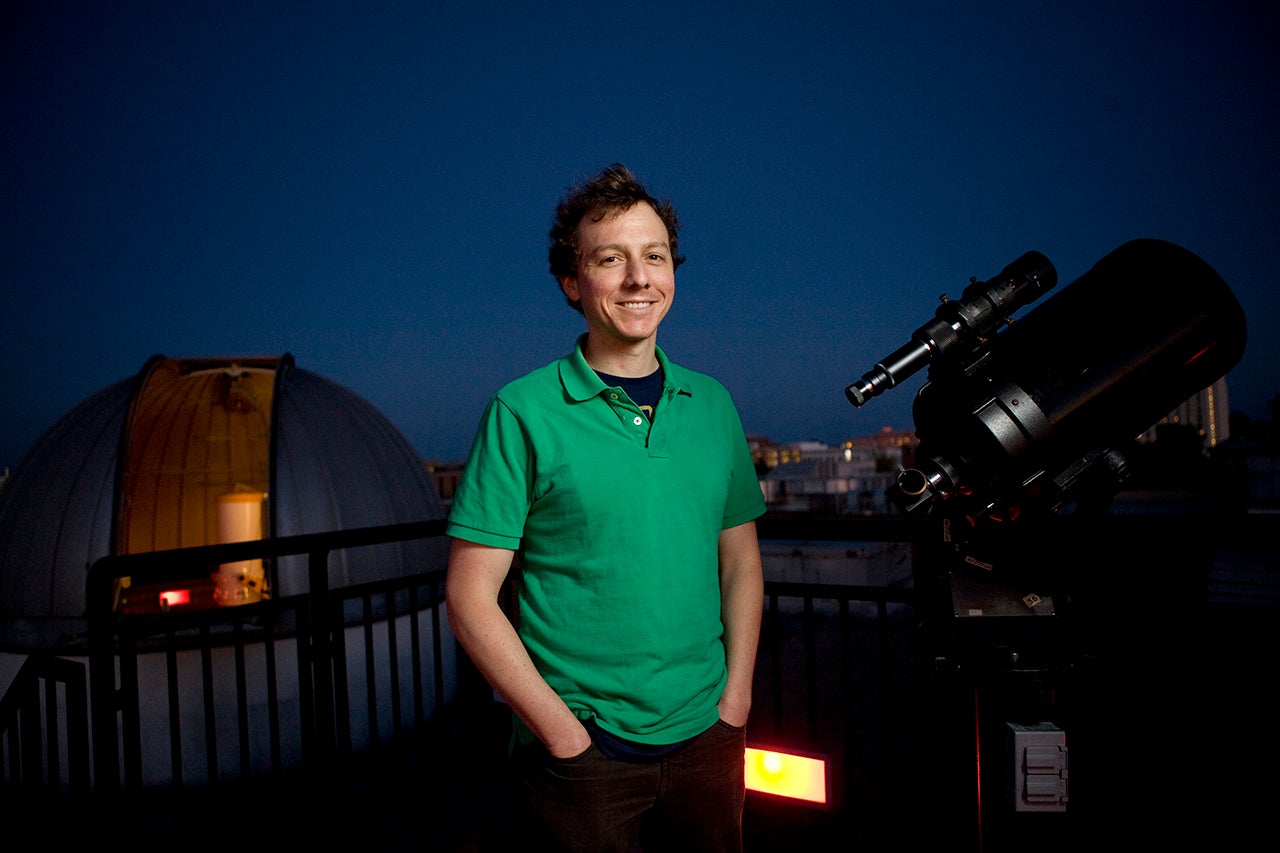The journal Nature has published a paper co-authored by Joe Carson, associate professor of astronomy at the College of Charleston, with his research team that recently discovered and captured an image of a giant planet orbiting b Centauri, a binary system that contains the most massive planet-hosting stars detected so far.
“This rare discovery represents one of the only circumbinary exoplanets – a planet orbiting around two stars – ever to be directly imaged. With the central binary star having a combined mass at least six times that of the Sun, this is by far the most massive star system ever known to host a planet,” says Carson, adding that a planet system discovered by two CofC students in 2013 is tied for second. “Adding to its peculiarity, the gas giant planet has an orbital distance that is a staggering 100 times greater than the distance of Jupiter from our own Sun, making this one of the widest orbit planets ever discovered. Extreme in almost every regard, the planet system challenges our conventional ideas about how planets form.”
Indeed, a Dec. 8, 2021, Nature news article titled “Giant planet imaged orbiting two massive stars” reports that the discovery has “stretched our collective imagination of what a planetary system looks like.” And, as CNN reported, “it’s just one of many discoveries rewriting what scientists understand about planet formation, especially under extreme circumstances.”
The full findings of the team, which was led by researchers from Stockholm University, are detailed in their Nature paper, titled “A wide-orbit giant planet in the high-mass b Centauri binary system.”
“My main contribution to this investigation consisted of the original work to help establish the observational survey, which was carried out on the VLT 8-meter Telescope in Chile,” says Carson. “The survey represented a scientific extension of the previous-generation survey that I led using the Subaru 8-meter Telescope in Hawaii, which also searched higher mass stars for gas giant planets.”




